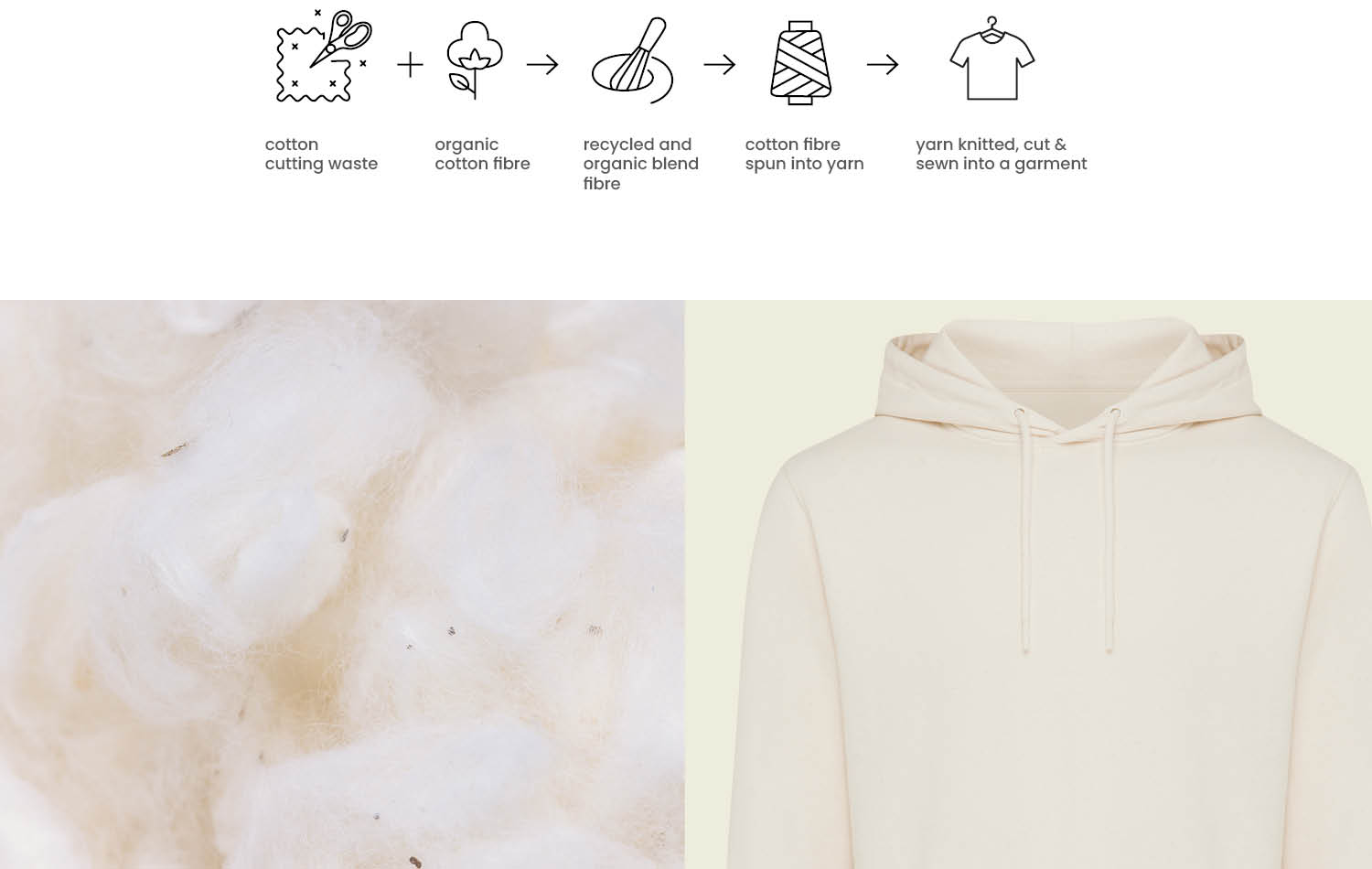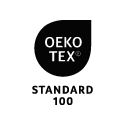2.1: Recycled cotton
Cotton, the cornerstone of the textile world, holds a paradoxical role as both beloved fabric and prolific waste generator. Europe alone discards a staggering 4 million tonnes of clothing annually, fuelling a global waste crisis. In countries like Bangladesh and India, textile production waste soars to even greater heights.
In a bid to minimize our environmental footprint and combat waste, iqoniq has taken a bold step towards integrating recycled cotton into our production process, creating premium garments while drastically reducing our reliance on virgin materials. Our commitment focuses on pre-consumer cotton waste, using discarded textiles from production, such as cut-offs, rejected fabrics, and unused cotton components.
Recognizing that the length of recycled cotton fibres does not produce strong enough fabric, we adopted an innovative approach. Our blends consist of 100% cotton, strategically combining recycled and virgin organic fibres to optimize fabric strength, extend the product lifecycle, and deliver that irresistibly soft handfeel.
2.2: Organic cotton
Enter organic cotton, the embodiment of ethical and eco-responsible textile practices that underscore our clothing designs. Its cultivation pivots on ecological principles, swapping chemical fertilizers and pesticides for natural compost, safeguarding both farmers’ well-being and the purity of field waters.
But it doesn’t stop there; genetic modification is a strict no-go in the organic cotton realm, preserving ecosystems, nurturing biodiversity, and championing environmental equilibrium in the vicinity of cotton fields.
In iqoniq’s collection, the choice is clear – we have integrated organic cotton into our material blends, elevating fabric quality and enhancing that irresistible soft touch.






